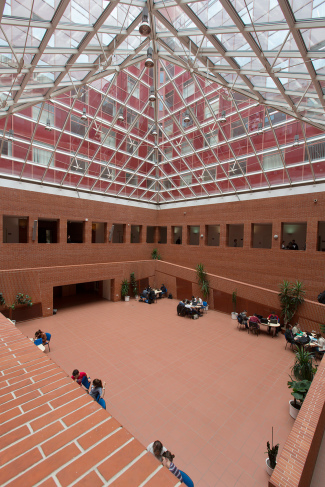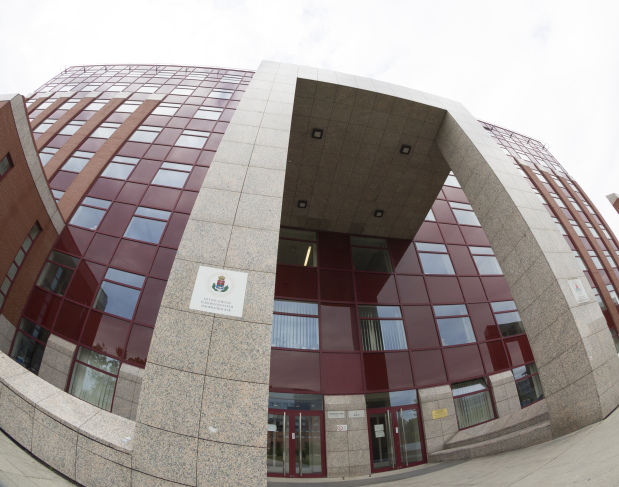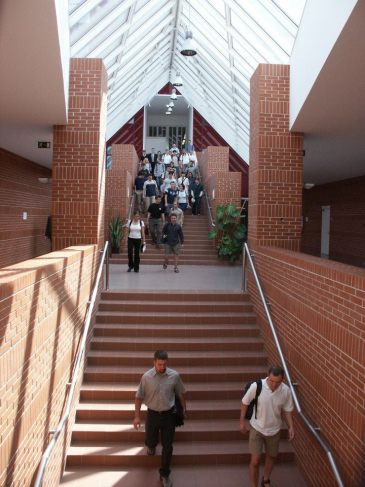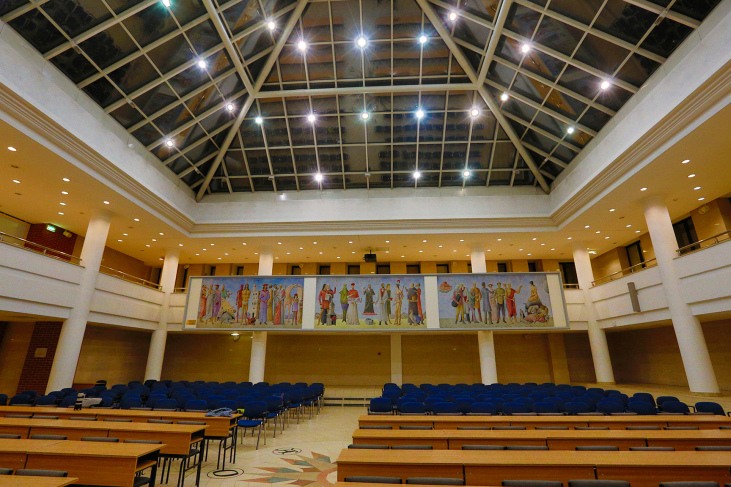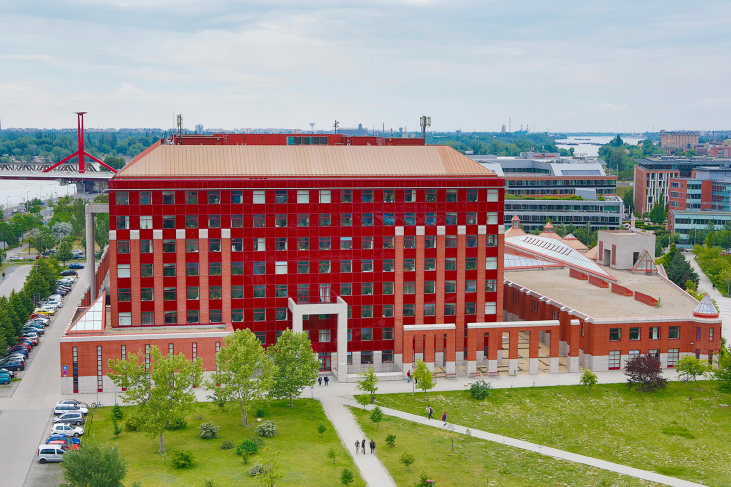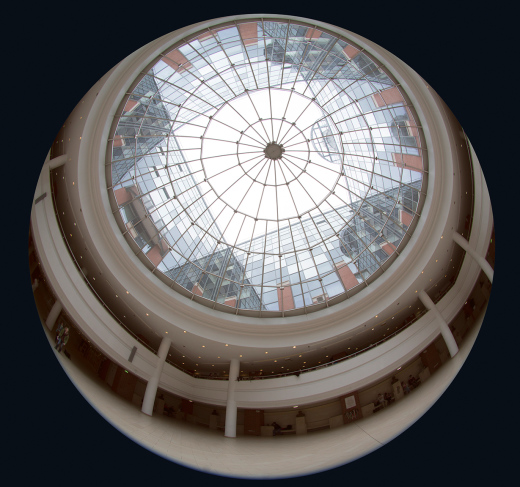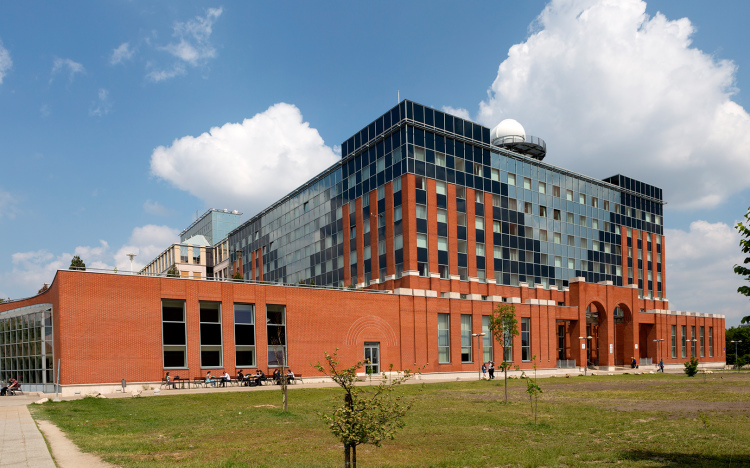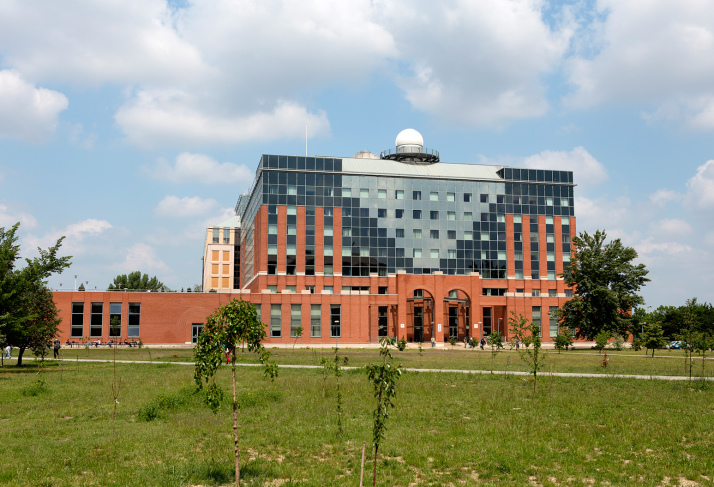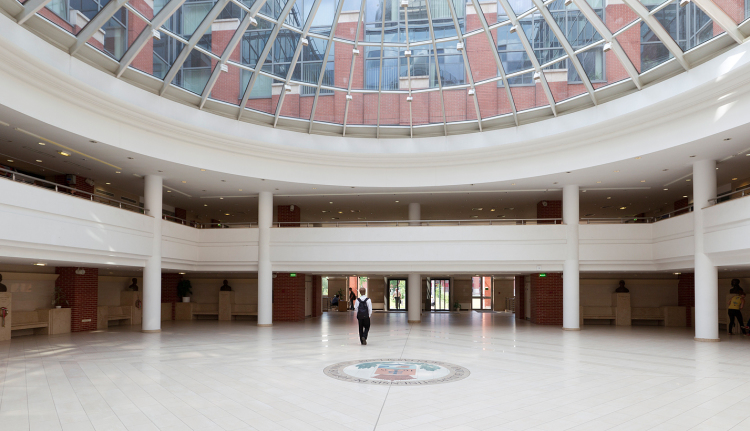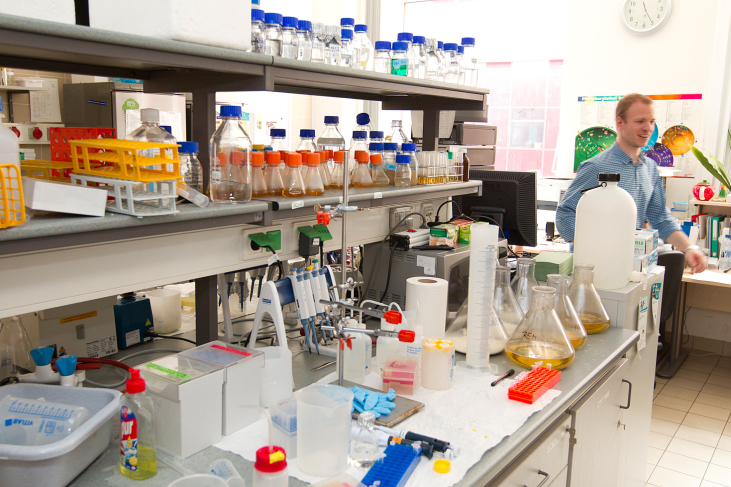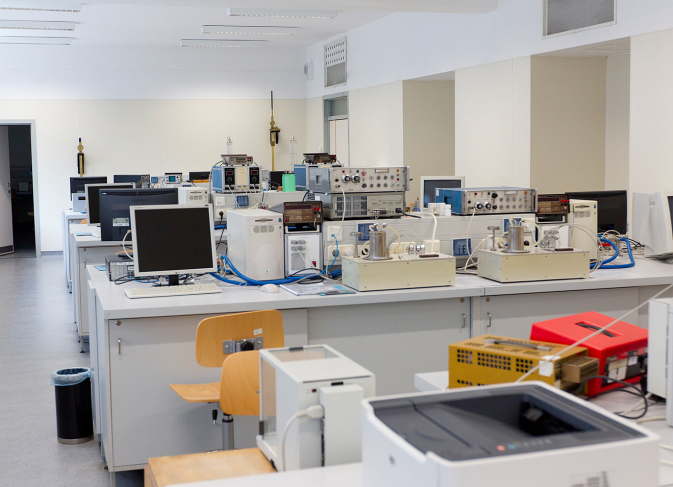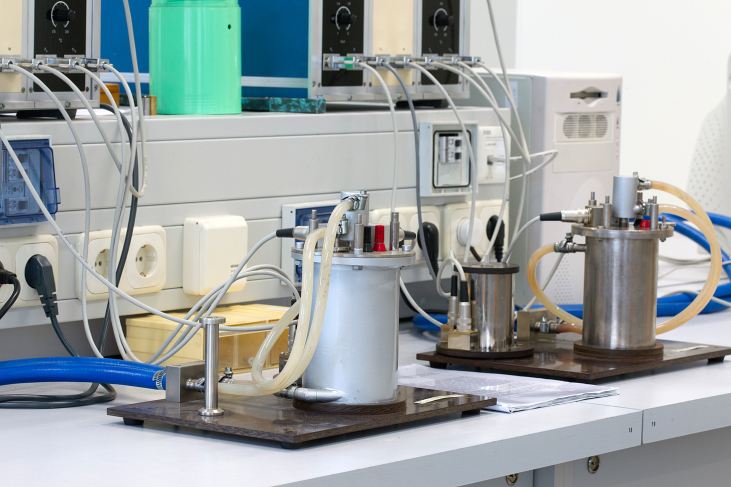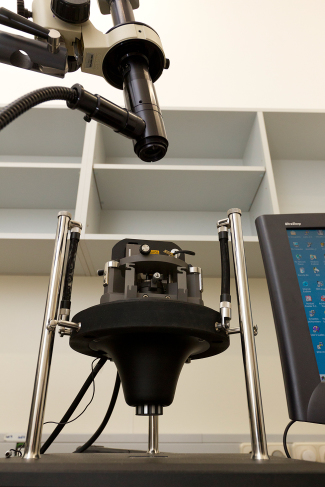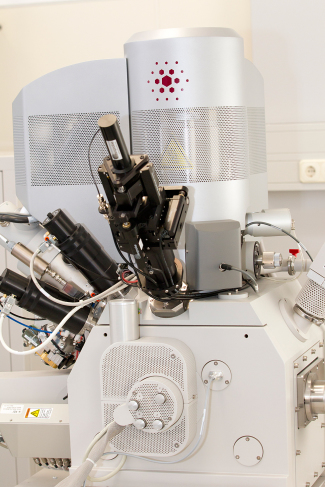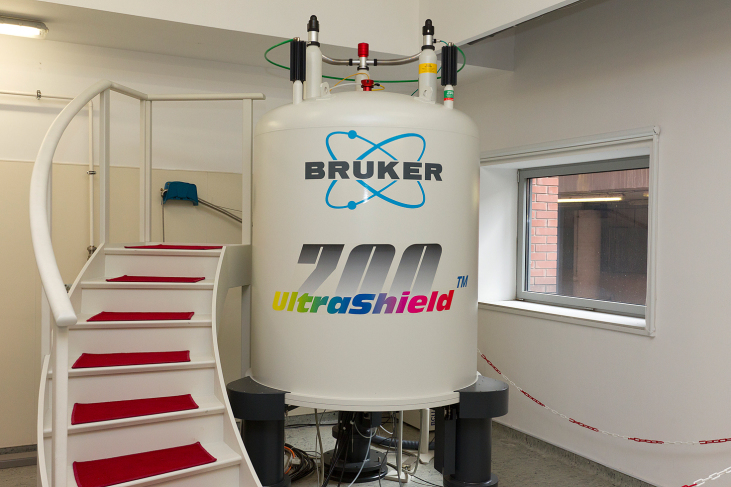Physics MSc
Physics MSc
Physicist
Degree program
Master
FF/1443-2/2015
Institute of Physics
English
4 semesters (2 years)
120
1
30
The goal of this program is to train professional physicists who have a broad overview of contemporary physics and are able to join research on their specialized fields.
This program is recommended to applicants who already have their BSc in physics and want to be research physicists by deepening their knowledge.
This program enables students to have broad background in the major fields of physics (atomic and molecular physics, condensed matter physics, nuclear physics, particle physics, statistical physics) and being being specialized in selected areas (astrophysics, atomic and molecular physics, nuclear and heavy ion physics, biophysics, condensed matter physics, computational physics, environmental physics, particle physics, statistical physics and complex system).
Tracks/Specializations:
Research Physicist Specialization
Astrophysics Module
Atomic and Molecular Physics Module
Nuclear and Heavy Ion Physics Module
Biological Physics Module
Condensed Matter Physics Module
Particle Physics Module
Statistical Physics and Complex Systems Module
The Physics MSc program offers both the development of a broad background in the major fields of physics (atomic and molecular physics, condensed matter physics, nuclear physics, particle physics, statistical physics), and the specialization in selected areas (atomic and molecular physics, astrophysics, biophysics, condensed matter physics, computational physics, environmental physics, particle physics, statistical physics and complex system). The types of courses taken by the students include lectures, problem-solving courses, student seminars, laboratory work, and a research project supervised by an expert in the field.
Core foundation courses
Group and homomorphism. Subgroups, cosets, normal subgroups and factor groups. Products of groups. Conjugacy classes, centralizers and derived subgroups. Elements of mathematical crystallography.
Lie groups: topological properties, Lie algebras and Haar measure. Representations and covering groups. The rotation group.
Group actions: orbits and stabilizers, classification of transitive actions, operations on actions.
Group representations: irreducibility, Schur's lemma, direct sums and tensor products, branching rules, characters and orthogonality relations, projective representations, symmetrized products, Frobenius-Schur indicators, induced representations and the reciprocity theorem, polynomial invariants.
Group presentations: free groups, Nielsen-Schreier theorem,
...
The goal of the course is to present an overview of computational physics through examples in various fields.
Topics: Numerical and analytical modeling. Model, algorithm, code. Machine precision. Serial and parallel architectures. Classical mechanics simulation. Complex dynamics, chaos, growth processes. Simulating thermodynamic systems. The role of randomness in simulations. Numerical optimization. Molecular dynamics, Verlet-algorithm. N-body simulations. Diffusion, flows, waves. Finite element method.
The aim of the course to provide knowledge and practice on basic, modern measurement methods used in scientific research and engineering practice. During the semester each student performs seven 4-hour lab exercises and prepares the respective protocol.
The laboratory measurements:
- Single-crystal X-ray diffraction
- X-ray line profile analysis
- Transmission electron microscopy (TEM)
- Scanning electron microscopy (SEM)
- Atomic force microscopy (AFM)
- Liquid scintillation spectrometry
- Gamma spectroscopy
- Infrared spectroscopy
- Electron spin resonance
Specialized core courses
- Basics of quantum mechanical many-body theory
- Perturbation theory, variational methods
- Atoms with several electrons
- Hartree-Fock approximation
- Theoretical basics of molecules
- Diatomic and polyatomic molecules
- Interaction of atoms and molecules with magnetic fields
- Interactions between atoms and molecules
Basic properties of nuclei, mass, charge- and matter distribution, binding energy. Properties of excited states, energy, spin, parity, isospin, nuclear moments, level density. Features of the strong interaction, nucleon-nucleon scatterings. Weak and electromagnetic interactions of nuclei. Nuclear models, shell model, collective models, rotational and vibrational states. Nuclear reactions, direct and compound reaction models, resonances.
Characterization of interactions, their field theoretic description, symmetries and conservation laws, discrete symmetries and the parity or the CP violation, low mass particles, strangeness, the barion and lepton numbers, the basis of the group theoretic description, non relativistic quark model, the Gell-Mann-Okubo mass formula, quantization of the electromagnetic field, light emission and absorption, quantization of fermionic fields, electron electron scattering, the Compton effect, electron positron annihilation
Review of the equilibrium statistical physics: ensembles. Ideal quantum gases. Interacting systems: expansions. Mean field theory. Stability of thermodynamic states, phase transitions. Condensed matter at low temperature: elementary excitations. Non-equilibrium ensembles, irreversibility, relaxation, linear response, Master equations.
Symmetries and the role of broken symmetry in solid state physics. Quantum theory of lattice vibrations. Experimental and theoretical methods for band structure calculations. Semiclassical model of electron dynamics. Electrons in strong magnetic field. Transport and optical properties. Quantum theory of magnetism. Ginzburg–Landau theory and BSC theory of superconductivity.
Specialized differentiated courses - Astrophysics module
75 percent of the lecture covers topics related to galactic dynamics, including: collisionless Boltzmann-equation, properties of elliptical galaxies, vertical and horizontal structure of disk galaxies. The remaining few lectures cover various other subjects, like: large-scale structure of the Universe, galaxy clusters and quasars.
It lays the fundations to the next term course “Cosmology”. Syllabus: Curved coordinates, metric tensor. The principle of equivalence. Covariant derivatives. Riemannian, Ricci tensor. Energy-momentum tensor. Einstein's equations. Schwarzschild metric. Weak gravitational fields. Gravitational waves. Experimental evidence: precession of apsides, light deflection, Gravity Probe B experiment, Hulse-Taylor pulsar. Friedmann–Robertson–Walker metric. Expansion of the universe, red shift. Cosmological constant. Cosmological inflation.
The course gives an introduction to the theory of gravitational waves (GWs), GW detection, and astrophysical sources of GWs. We overview the general relativistic background of GWs, the fundamentals and capabilities of interferometric GW-detectors and their noise background, and learn tools for analyzing data output of these detectors. We also study the applicability of GW-observations in understanding the physics of the GW sources.
Cosmology, as a scientific field, studies the physics of formation and evolution of the Universe as a whole and its various constituents. The course provides an insight into the general relativistic background of cosmology and the thermal history of the Universe, and outlines the connections of the field with particle physics. Students can learn about the most recent results, unsolved problems, and observational projects in present day precision cosmology.
Thermodynamics of the early universe. Particle physics background of cosmology. Cosmic inflation. Baryogenesis. Big-bang nucleosynthesis. Hydrostatic burning phases of stars, supernova explosions. Nucleosynthesis in stars and supernovae.
Overview of various equipments and methods used in deriving astrophysical information from observations of different celestial objects (stars, galaxies, planets, etc.). Basic categories of astronomical observations: imaging, photometry and spectroscopy. Effects of the Earth's atmosphere on ground-based astronomical observations. Introduction to space astronomy. Observations in the entire electromagnetic spectrum, from gamma rays to radio waves. Fundamental stellar parameters and their observational determination.
Specialized differentiated courses - Atomic and molecular physics module
Methods for determining the ground state: variational principle, Eckart inequality. Method of moments. Perturbation theory, recursion formulas. Rayleigh–Schrödinger and Brillouin–Wigner method. Size consistency. Reduced resolvent. Pade-approximation. Partition method. Wave operator, Lippman–Schwinger equation. Second quantization formalism. Wick's theorem, Fermi vacuum. Electron-hole formalism. Density matrices. Fock operator. Spatial orbitals. Brillouin theorem. Many body perturbation theory.
Discovery of C60, historical survey, isolated cage like molecules; Properties of fullerenes in gas -, liquid - and solid phases; Doped fullerenes, superconductivity; fullerene polymers; Preparation of single-walled and multi-walled carbon nanotubes; Geometry, electronic structure and vibration properties of carbon nanotubes; Applications of carbon nanotubes
Flexible chain polymers: polymerization polycondensation, partitition function of polymers, basic of conformational analysis, local and global conformations, cooperativity effects, statistical characterization of ideal polymer coils, theta state, rubber elasticity Conjugated polymers: conjugated structures, linear chain – instabilities in one dimension, effect of doping, insulator-metal transition, solitons, polarons, bipolarons Biopolymers: configuration of cellulose, investigation of the structure of proteins with calculation of the energies and with statistical methods, theoretical investigation of transmembrane proteins, structure and flexibility of DNA
Occupation number representation
Finite temperature Green’s function, calculation of thermodynamical quantities by the Green’s function.
Perturbation theory, Feynman’s graphs.
Electron gas, Thomas-Fermi approximation, RPA (random phase approximation), correlation energy at zero temperature and in plasma, strong electrolytes, screening of charges
Quasiparticles, spectral function, retarded Green’s function, quasiparticles in electron gas.
Density fluctuation propagator. Determination of collective excitations, Plasma oscillations, Landau damping in plasma.
- Properties of Bose gases
- Bose-Einstein condensation (BEC)
- Elementary excitations (Bogoliubov’s canonical transformation)
- Temperature dependence of order parameter
- Superfluid Fermi-gases
- Cooper phenomenon
- Bardeen-Cooper-Scriffer (BCS) theory
- Energy gap, critical temperature
- BCS-BEC transition
- Experiments with trapped ultracold bosons
- Bose-Einstein condensation in external potential in the noninteracting model
- Derivation and solutions of the Gross-Pitaevskii equation at zero temperature
- Thomas-Fermi approximation for the condensate.
- Density wave excitations for bosons, Bogoliubov equations for bosons
- Quantum hydrodynamics for the excitations (for bosons)
- The atomic laser
- Vortices in quantum gases
- Experiments with trapped ultracold fermions
- BCS theory for trapped atomic gases, local density approximation, Feshbach resonances, gap.
- Universality at the Feshbach resonance.
- Density wave excitations, Bogoliubov-De Gennes equations for fermions at zero temperature.
- Quantum hydrodynamics for density wave modes of fermions.
- Phenomena in periodic trap potentials.
Specialized differentiated courses - Nuclear and heavy ion physics module
Nucleon-nucleon interaction, phase shift analysis, three-body forces. Nuclear scattering theory, two- and three-body scattering, multichannel scattering, polology, scattering theoretic description of nuclear reactions. Bound- and resonant states of few-nucleon systems, effective interactions. Numerical methods for the description of few-body systems. Applications: three-body resonances, neutron halo states, nuclear reactions with astrophysical importance.
The interactions of nucleons at low energies can be successfully interpreted with momentum-dependent phenomenological potentials, also potential models based on meson exchange and also in the framework of quantum field theory. These theoretical approaches and their relation to the experimentally available informations are reviewed. The change of their accuracy is assessed when the energy of interaction is inceased and resonances do appear. Mean field approximations are introduced and discussed in detail for the nuclear matter and hadronic matter.
The appearance of the quark degrees of freedom is investigated in high energy nucleon-nucleon interactions. Different field theoretical models of quark confinement are introduced and applied.
The lowest order calculation of spin
...
- Overview of particle accelerators at intermediate energy: GSI, Legnaro, Ganil, MSU, RIKEN.
- Experimental possibilities of producing radioactive ion beams, fragmentation, fission, ISOL.
- Properties of nuclei far from stability and the corresponding detection technics: neutron halo, shell closure, complex neutron detector systems, pulse shape discrimination, particle indentification technics using semiconductor detectors.
- Measuremet technics to determine neutron capture cross sections of short-lived nuclei.
- Nuclear activation technics for nuclear analytics and for cross-section determination, PIXE analysis.
During the course we learn about the current methods describing nuclear reaction from low to high energies: hydrodynamical models, time dependent Hartree-Fock approximation, random phase approximation, Vlasov dynamics, optical potential, Boltzmann–Uehling–Uhlenbeck model, description of fermionic systems, equations of state, collective excitations, relativistic kinematics and hydrodynamics, description of particle production and phase transitions in nulcear physics (multifragmentation, chiral, etc.)
Models of relativistic ion collisions. Most important experimental observables. The experimental heavy-ion programs of the CERN SPS and LHC, as well as the BNL AGS and RHIC accelerator facilities. The phases of the hot and dense, strongly interacting matter. The Glauber-Gribov model, and the determination of centrality in heavy-ion collisions. The phenomenology of heavy-ion collisions: Monte Carlo models, hydrodynamical models, fireball model, coalescence model, and applications of perturbative QCD. Jets, and jet quenching phenomena. The theoretical and experimental signatures of the quark-gluon plasma. Latest results from the experiments at the LHC and RHIC accelerators.
Basic operating principles of particle- and nuclear physics detectors. Important detector types: drift chambers, Cherenkov detectors, Time of Flight detectors, Time Projection Chambers, calorimeters, muon detectors, semiconductor trackers, GEMs. The interaction of particles with matter. Important experimental discoveries. Basic operating principles of particle accelerators, and various challenges. Cryotechnology and superconducting magnets, beam optics. Experiments based on cosmic radiation. Experiments with neutrinos. Large experiments based at modern particle accelerator facilities. Design of experiments and various challenges. Principles of measurement of various physics quantities. Particle identification. Basic information on electronics used in nuclear physics experiments.
...
Specialized differentiated courses - Biological physics module
Molecular bioenergetics. The structure of proteins. The function of enzymes - kinetics and energetics, enzyme mechanisms. Structural properties of nucleic acids. DNA “metabolism” - replication and repair. The molecular structure of the genetic information. Rearrangements in the genetic material. RNA metabolism - transcription, maturation and degradation. Protein metabolism - translation, post-translational modifications, transport and degradation. The regulation of enzyme quantities - regulation at the level of DNA, RNA and protein metabolism. Molecular systems biology - biological system information and molecular biotechnologies.
Basic biological concepts, physics of molecular biological processes, intermolecular interactions, low Reynolds number hydrodynamics, diffusion, activation, solutions, chemical reactions, structure and properties of proteins and nucleic acids, biological membranes, membrane potential, transport processes, nerve signaling, biological energy conversion, sensing.
Goldman-Hodgkin-Katz equation, molecular motors and pumps, redox processes, bioenergetics, oxidative phosphorylation, photosynthesis, modern biophysical methods (FRET, optical tweezers, AFM, OWLS, SPR, QCM, electrophoresis, dynamic force spectroscopy), bioinformatics, biological networks, neural networks.
The course covers the basic biophysical techniques used to investigate macromolecular structures: X-ray crystallography, NMR/ESR spectroscopy, mass spectroscopy, electrophoresis, and optical spectroscopy: absorption-, fluorescence-, infrared- and Raman-spectroscopy.
The course covers mechanisms – and the corresponding mathematical or computational models – underlying various cell- and developmental biological phenomena. Topics: intercellular communication through ligand/receptor pairs, intracellular signal transduction networks, EGF and MAPK signaling, stochastic (Gillespie) reaction kinetics, transcriptional oscillators, feedbacks and robust adaptation, cell motility and multi-scale models of cellular systems.
Major topics: introduction to sytems exhibiting scaling, basics of fractal geometry, simple models of growing structures, percolation, self-organized criticality, bacterial colonies (microbiological background, morphological diagram, models of colony growth, synchronization in biology, integrate and fire and the Kuramoto models, networks: models of equilibrium and growing graphs, processes and modules, collective motion: basic phenomena and models, group motion of people
Flexible chain polymers: polymerization polycondensation, partitition function of polymers, basic of conformational analysis, local and global conformations, cooperativity effects, statistical characterization of ideal polymer coils, theta state, rubber elasticity Conjugated polymers: conjugated structures, linear chain – instabilities in one dimension, effect of doping, insulator-metal transition, solitons, polarons, bipolarons Biopolymers: configuration of cellulose, investigation of the structure of proteins with calculation of the energies and with statistical methods, theoretical investigation of transmembrane proteins, structure and flexibility of DNA
Specialized differentiated courses - Condensed matter physics module
Models of interacting electron systems. Correlation and screening. Quasi particles and collective excitations. Density functional theory. Landau theory of Fermi liquid. Luttinger liquid, quantum Hall liquid. Broken-Symmetry states in interacting electron systems. Strongly correlated systems. Random systems. Mesoscopic systems.
Experimental methods applied in condensed matter physics (diffraction, microscopy, spectroscopy, etc.) are discussed in details. First the physical bases of the different techniques are introduced, then the different type of instruments applied recently are explained, finally several real examples are shown.
Thermodynamics of multicomponent systems. Lattice defects. Equilibrium and non-equilibrium phase diagrams, calculation of phase diagrams from free energy – composition functions. Ideal and regular solid solutions, factors determinig solid solubility. Diffusion in solids: mechanisms, correlation, Kirkendall-effect, Dareken-equations. Solidification, nucleation.
Precipitation from supersaturated solid solutions: stability of the initial state, sharp and continuous transformations. Nucleation and growth. Interface energy, metastable phases. Spinodal decomposition, gradient energy. Mechanisms of plastic deformation of solids. Strengthening effects. Recovery and recrystallization. Diffusion-less phase transformations: structure changes, Martensitic transformation, shape memory effect. Nanostructured materials. Ceramics. Glasses. Polymers. Composites and functionally graded materials.
Origin of different magnetic properties of materials (magnetic moments, magnetic interactions (magnetostatic, exchange, super exchange, RKKY), magnetic anisotropy). Magnetic measuring techniques (induction and force based, SQUID, nuclear and optical methods). Magnetic order (ferro-, antiferro-, ferrimagnetic, non-collinear), magnetic domain structure and magnetic materials (hard- and softmagnetic materials, spinglasses, amorphous materials, superparamagnetic systems). Magnetic phenomena (surface anisotropy, exchange bias, giant magnetoresistance, quantum tunneling) in nanosystems (thin films, multilayers, granular materials).
Phenomenological description of superconductivity: Ginzburg-Landau theory, Bogoljubov-de Gennes equations, vortexes. Tunneling: Josephson effect, Andreev reflection. Field theoretic description of strongly coupled superconductors. Unconventional superconductivity, phase-coherent states of low-dimensional systems.
The aim of the course is to provide comprehensive knowledge on the theoretical and physical basis of semiconductor devices used in modern information and communication systems.
Topics:
types and manufacture of semiconductors; P-N and metal–semiconductor junctions; type of diodes (tunnel, backward, varicap, Gunn, ...); BJT devices, Ebers-Moll equations; types and operation of MOS transistors; applications of semiconductors: CCD, solar cells, CPU, types of semiconductor memories (RAMs, Flashes, SSD, ...); semiconductor sensors.
Introduction to nanophysics.Relation between the scattering matrix and the Landauer-Buttiker formula, the transfer matrix and the Green's function approach. Ballistic and diffusive transport, the Ohm’s law in nanostructure, Aharonov–Bohm effect, quantum Hall effect, weak localization, universal conductance fluctuation, spintronics, graphene.
Specialized differentiated courses - Particle physics module
The importance and types of particle accelerators. Large accelerators currently in operation and planned. The principles of particle detection: types of detectors, particle momentum, mass, spin, lifetime, magnetic moment measurements. Various distributions, Dalitz plot. The use of computers in experimental particle physics.
Pion-nucleon interaction, resonances, dispersion relations, current algebra, weak end electromagnetic currents, chiral symmetry, Goldston's theorem, the pion as a Goldstone boson, relations between quark and meson masses, effective Lagrangeans, sigma model
Canonical quantization. General theory of symmetries, space-time symmetries. Quantum theory of free scalar, fermion, photon and vector fields. Interaction Lagrangeans. Interaction picture, LSZ reduction, S matrix. Transition probability and cross section. Wick's theorem and Feynman diagrams. Examples for the calculation of specific processes. Functional integral formalism. Non-abelian gauge theories.
Scattering theory in quantum field theory. N point Green functions and perturbative evaluation. Feynman-diagrams and their evaluation in quantum electrodynamics. Calculation of the simplest divergent diagrams and regularization with the Pauli-Villars method: vacuum polarization, the electron self-energyand vertex. The renormalization method. Determination of the renormalized charge, electron mass and the wave function renormalization constant. Role of the Ward identity. Power counting. Classification of quantum field theories as renormalizable, super-renormalizable and non-renormalizable theories.
Historical review, conserved quantum numbers and selection rules, muon decay, strangeness conserving semi leptonic processes, beta decay, conserved vector current, axial form factors, semi leptonic decays of kaons and hyperons, non leptonic kaon decays and the neutral K meson, GIM mechanism, tau lepton b quark and the flavour families, the KM matrix, the limits of current current theory, spontaneous symmetry breaking and the Higgs mechanism, the bosonic and fermionic sectors of the SW model, the foundations of grand unification.
History of QCD. Lagrange-density, quantization, renormalization, renormalization group equations. Asymptotic freedom and asymptotic behaviour of Green functions. Electron-positron annihilation into hadrons, jet physics. Deeply inelastic scattering. QCD description of hard processes.
Specialized differentiated courses - Statistical physics and complex systems module
The different types of dynamical systems, nonlinearity, examples from physics, chemistry, biology and engineering, respectively. One dimensional maps, dynamics on the circle, nonlinear oscillators, damped pendulums, Josephson junctions in superconductivity. Two-dimensional dynamics, Poincaré-crosssection, classifications of linear systems, linearization around the fixed points, conservative and reversible systems, index theorems. Limit cycles: Poincaré-Bendixson theorem, relaxations in oscillations. Classification of bifurcations, catastrophes. Chaos: Lorenz-equations, strange attractors, chaos in one dimensional maps, Lyapunov exponents, universality, fractal dimensions, multifractal descriptions.
Theory of linear response: Correlation and response functions. Analytic properties, excitations. Classical limit. Dissipation. Fluctuation-dissipation theorem. Consequences of microscopic time reversibility symmetry. Transport processes: electronic conductivity. Cross section in neutron scattering. Characterization of stochastic processes, Marcov-processes. Diffusive processes: Fokker-Planck equation, stochastic differential equations. Applications in physics: Brownian motion, hydrodynamic fluctuations, Onsager relations. Jump processes: Master equation. Stability of the stationary distribution, H-theorem. Basics of the Monte Carlo method. The Boltzmann equation. Relaxation time approximation. Applications in physics.
- Stability of thermodynamic state: coexistences and transitions of different phases, symmetry breaking, classifications. Overview of phase transitions in condensed matter physics. Critical exponents.
- Models of phase transitions. Exact results. Long range order correlations in symmetry breaking states of isotropic systems.
- Classical theories and their critics: Landau theory, mean-field approximation.
- High temperature series.
- Scaling hypothesis and its consequences
- Renormalization group transformation and its connection with critical behaviors: fixed point, scaling, universality.
- Construction of the transformation in real- and in k-space respectively. Overview of the results.
- Dynamical critical phenomena: conventional theory, dynamical critical scaling, examples.
Complex systems in general. Simulating and analysing omplex networks. Generating Erdős-Rényi graphs, small world and scale free networks. Algorithms for degree distributions, graph diameter, percolation, adjacency matrix spectrum, cliques. Robustness of graphs. Simulating chaotic dynamics, measuring Lyapunov exponent and dimension of strange attractor. Cellular automata. Neural networks, Hopfield model, perceptron.
Effects of Earth’s rotation (Coriolis and centrifugal forces), Navier-Stokes equation in rotating reference frames, dimensionless form of equations, Rossby number, Froude number, dynamical pressure, geostrophic equilibrium, Taylor-Proudman theorem, linearization of the equations, wave phenomena in rotating fluids, shallow water equations, conservation of potential vorticity, effects of surface curvature, Ekman boundary layers, effects of density stratification, thermal wind, Boussinesq approximation, baroclinic instability.
Introduction to nanophysics.Relation between the scattering matrix and the Landauer-Buttiker formula, the transfer matrix and the Green's function approach. Ballistic and diffusive transport, the Ohm’s law in nanostructure, Aharonov–Bohm effect, quantum Hall effect, weak localization, universal conductance fluctuation, spintronics, graphene.
Major topics: Fractals in nature, fractal dimension, types of fractals (isotropic, self-ffine and fat), multifractals, cluster models of fractal growth, percolation, random walks, diffusion-limited aggregation: its simulation, theoretical treatment and multifractal features, growth of self-affine surfaces, role of fluctuations, related equation, role of surface tension, continuum description of fractal growth, overview of related experiments
Extreme statistics, Fischer-Tippet theorem and applications in risk assessment;
Central limit theorem, stable distributions, attraction pools, centrality and norm constant choices, speed of convergence, large deviations;
Random matrices, Wigner surmise, Wishart matrices, Marchenko-Pastur theorem.
Multivariate distributions, copulae. Price fluctuations on real markets, empirical stylization, non-stationary behavior (ARCH-GARCH models). Portolio and risk measures: elliptical distributions, portfolio optimization, value-at-risk, variance as risk measure, absolute deviation, expected shortfall, maximal loss, coherent and spectral measures. Financial regulation examples (Basel I, II and III, order book regulations). Instability of portfolio optimization, divergence of estimation
...
Specialized differentiated courses - Computational physics module
The aim is to introduce students to advanced numerical methods applied in physicists' research practice. Syllabus: Linear systems, eigenvalue problems, singular value decomposition. Sparse matrices. Numerical integration, Monte Carlo methods. Numerical solution of ordinary differential equations, Runge-Kutta and Bulirsch-Stoer methods, adaptive stepsize control. Conservative and stiff equations. Two point boundary value problems: shooting and relaxation methods. Numerical solution of partial differential equations. von Neumann stability analysis. Finite difference, finite volume, finite element methods. Spectral methods. Multigrid methods.
During the course the students get acquainted with modern methods of analyzing large data sets and learn to perform such analysis. This is the introductory of a series of lectures, where time series analysis, principal component analysis, exploration of correlations, noise, artificial intelligence, databases, signal processing, cluster detection, classification and optimization are studied.
History of communication networks (telephone, Internet) and main technologies. Topology of networks: Internet AS and router level topology, Erdos-Renyi random networks, Barabasi-Albert scale-free networks, measurement of network topology. Traffic in networks: Erlang formuli, long range correlations, multifractal traffic models, on-off processes, Hurst-exponents. Microscopic description: basic concepts of queueing, M/G/1 queue, fluid model, diffusion model, available bandwidth, delay and available bandwidth measurements. Traffic control in TCP/IP: congestion window, stochastic models, 1 over sqrt(p) rule, mean field approximation, Network Simulator. The future of the Internet: peer-to-peer systems, wireless Internet, the PlanetLab
The course aims to provide knowledge on the functioning principles and physical fundamentals used in modern information and communication technologies. Topics: electromagnetic waves in conductors and dielectrics; wave optics; wired, wireless and optical transmission; magnetic properties, MR, AMR, GMR, spin valve systems; magnetic and optical data storage; micromechanics, MEMS; fundamentals of quantum computers.
The aim of the course is to present methods used in natural sciences to visualize information, including algorithms, programming techniques and available software packages. How to prepare 2D graphics, graphs and 3D illustration based on available data. Short introduction to the IDL and MatLab programming language. Programming in OpenGL and DirectX. Software and hardware background of stereoscopic and volumetric 3D visualization.
The goal of this computer lab is to give hands-on experience and to try in practice the methods learned during the “Computer simulations in physics” course. Students install, configure and run state-of-art physics simulation software, visualize and analyze the results, compare them to result found in scientific papers. Examples: Cosmological N-body simulations with Gadget2. Hydrodynamics simulations using OpenFOAM. Molecular dynamics with the HOOMD-blue package.
The aim of the course is to provide the students with basic knowledge in the field of performance-oriented, parallel programing. During the course the students will be familiar with the modern hardware architectures (CPU, GPU, APU) and the abstract realization of those. Using the abstract realizations an introduction and practical usage information to the present and planned parallel computational libraries and APIs, such as MPI, OpenCL, C++AMP and SYCL will be given.
The course builds on a basic knowledge of C/C++ from the audience, since the tools presented are based on C/C++.
The aim of the course is to promote the students practical knowledge in programing graphical processors at advanced level and map the area of applicability:
basis of functional programing, the functional building blocks, the functional structure and implementation of vector-matrix operations, solution of ordinary differential equations, classical N-body simulations, statistical physical simulations (Ising model), Monte-Carlo simulations, solution of partial differential equations.
Advanced level laboratories
The laboratory helps to acquire practice in atomic, molecular and biophysics. Students can choose from the measurements listed below. They have to complete only four measurements in the semester allowing them to deepen their knowledge in the specific field.
- Computer simulations of molecules
- Investigation of the electron structure of carbon nanotubes with absorption and fluorescent spectroscopy
- Laser cooling
- Electron spin resonance spectroscopy
- Nuclear magnetic resonance spectroscopy
- Raman microscopy
- Room temperature phosphorescence and pressure-dependent fluorescence spectroscopy of enzymes
- Investigation of the mass, size and conformation stability of biological macromolecules
- Analysis of chemical elements by detecting the X-rays induced by accelerated particles
-
Read more »
This laboratory is aiming to provide those students who are specialising in particle, nuclear or astrophysics with experience in experimental methods. The goal is to study these experimental methods more deeply, and thus the students will choose, according to their interest, only a small number of experiments, but they will spend more time and much more of their own independent effort and research on those, than at a usual laboratory course. These exercises include the following topics: Cherenkov radiation, various nuclear physics experiments with scintillators and gas detectors, measurement of the thermal neutron flux and diffusion length, parameters of late neutrons at nuclear reactors, neutron value and cavity effect at nuclear reactors, exercise to operate a nuclear reactor,
...
Investigation of flows with PIV (Particle Image Velocimetry) method. Internal waves formed inside stratified fluid. Baroclinal rotation instability, cyclonic and anticyclonic eddies. Diffusion phenomena inside layered medium. Liquid -congested phase transition in computer networks, fundamental diagram measurement. Anomalous diffusion of internet traffic: self-affine beahviour, 1/f noise, long-term correlation, anomalous diffusion. Chaotic circuit based on the Chua circuit. Non-linear dynamics of water droplets. Phase space measurements of the double pendulum. Two-dimensional turbulence in quasi-two-dimensional layers.
The aim of this subject is giving experimental experiences to help those students, who intend to realize their study in the field of solid state physics and/or materials science. By taking this lab, the students will have opportunity to know and to learn different actual research areas and/or basic experimental methods in more details. During the semester, depending on the available possibilities the students have to choose and carry out 3 complex measurements in different topics. Each measurement – one topic – takes four weeks with 5 hour work per week in the lab and self-sufficient work at home, including also the preparation of topic-report.. The measurements may be in the following topics: High resolution bicrystal diffractometria, precipitation phase transition, scaling mec
...
Thesis
The Physics MSc program offers both the development of a broad background in the major fields of physics (atomic and molecular physics, condensed matter physics, nuclear physics, particle physics, statistical physics), and the specialization in selected areas (atomic and molecular physics, astrophysics, biophysics, condensed matter physics, computational physics, environmental physics, particle physics, statistical physics and complex system). The types of courses taken by the students include lectures, problem-solving courses, student seminars, laboratory work, and a research project supervised by an expert in the field.
-
PhD student: a natural continuation of the MSc studies.
-
Physicist researcher: successfully completed MSc studies enable one to get a job in a research institute for physics.
-
Applied physicist in industry, R&D sector: industrial research and development welcomes young physicists, from automobile/oil/space industry to mobile phone companies.
-
Medical physicist: medical centers need professionals who are able to work with high-tech diagnostic devices.
-
Physicist in informatics: informatics often needs professionals who know the physical concepts underlying a problem to be solved.
-
Physicists in bank sector: the problem solving ability and knowledge of statistical methods enable physicists to work on monetary risk assessment or optimization problems.
4,190 EUR
4,190 EUR
160 EUR (non-refundable)
160 EUR (non-refundable)
4,190 EUR
160 EUR (non-refundable)
Yes
01, Sep, 2025
31, May, 2025
No
Entry requirements
Bachelor degrees in Physics can be accepted.
Additionally, Bachelor degrees in the fields of Chemistry, Environmental Science, Electrical Engineering, Chemical Engineering, Mechanical Engineering, Material Engineering, Computer Science Engineering and Mathematics can be accepted, if the applicant has at least 65 ECTS credits in the following fields:
physics, physical chemistry, electronics, mechatronics – at least 25 credits
mathematics, computer science, programming – at least 18 credits (with at least 10 in mathematics) and other natural science (chemistry, materials science, etc.)
Language requirements
An internationally accredited language examination is required with at least a B2 CEFR level or equivalent result.
Examples of minimum level accepted:
TOEFL iBT 72 pts
IELTS 5.5
Alternatively, an official certificate issued by the applicant’s previous higher education institution can be accepted, stating that the applicant’s previous education (Bachelor’s degree) was completed entirely in English.
| Document |
| Online application form |
| Bachelor-level degree |
| Transcript of records |
| CV |
| Motivation letter |
| Letter of recommendation |
| Copy of the main pages of the passport |
| Passport photo |
| Medical certificate |
| Copy of application fee transfer |
| Language certificate |
The application starts at the online application system. Students need to register in the system, fill in the online application form, upload the required documents and follow the instructions during the application process.
Procedure of the entrance examination
The entrance examination consists of a written part and an oral part. Both are held through Skype, except if the applicant is staying in Budapest. In the latter case, the entrance examination is held at the Institute of Physics. The applicant will be notified about examination dates by e-mail.
In the written part, four problems are to be solved within 120 minutes. The problems are in classical mechanics, electrodynamics, quantum mechanics and statistical physics, all at BSc level.
Following the evaluation, those who pass the written part will be interviewed through Skype. The applicant will be notified about the result of the examination by e-mail.
Prof. Dr. Zsolt FREI
Head of the Institute of Physics
Dr. Gyula BENE
Program coordinator of the Physics MSc in English
International Coordinator
Mr. Péter MOLNÁR
inter@ttk.elte.hu
+36-1-372-2695
More information
Faculty Website
Faculty of Science
Faculty of Science
0
/
0























0
/
0


